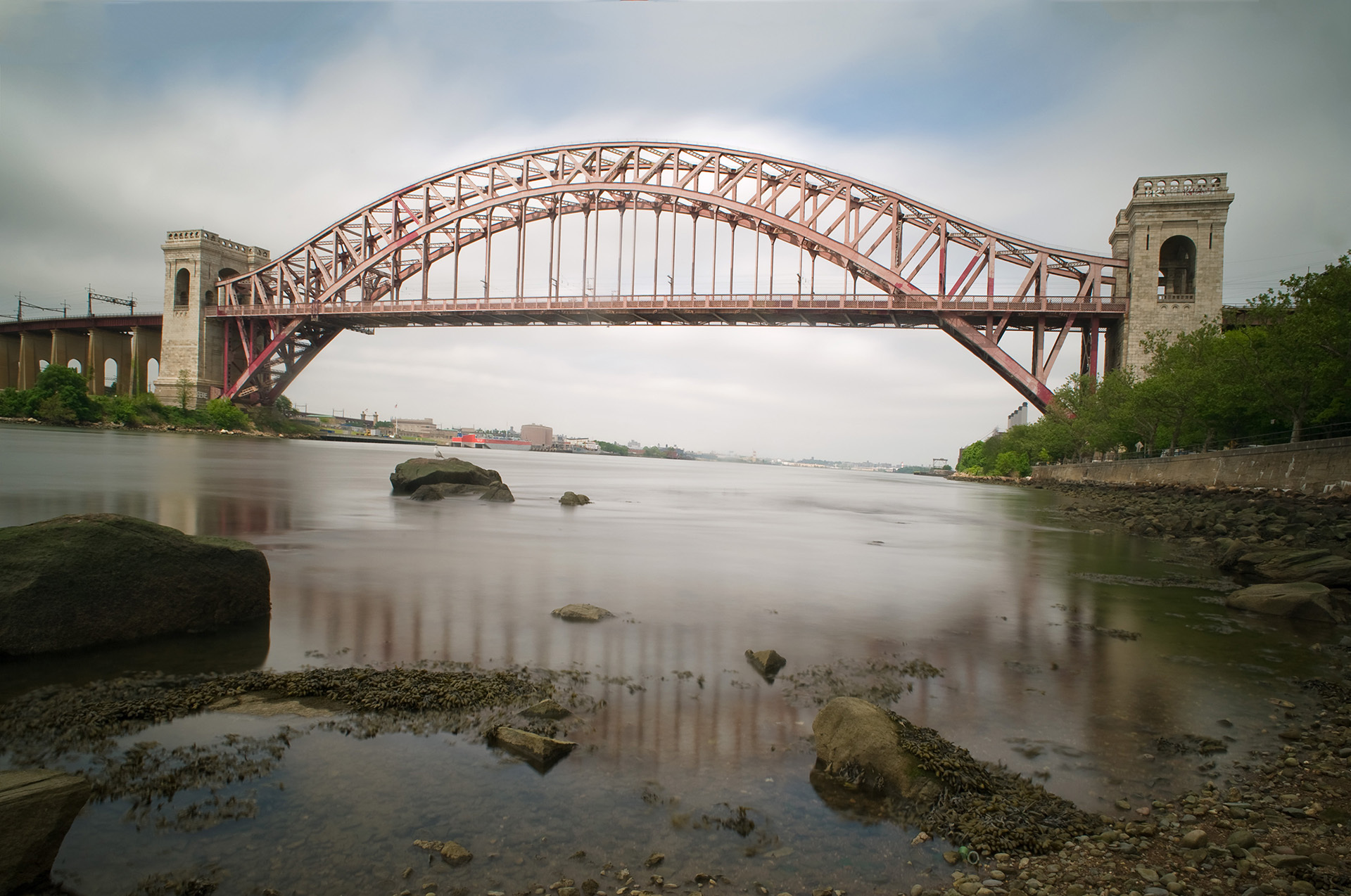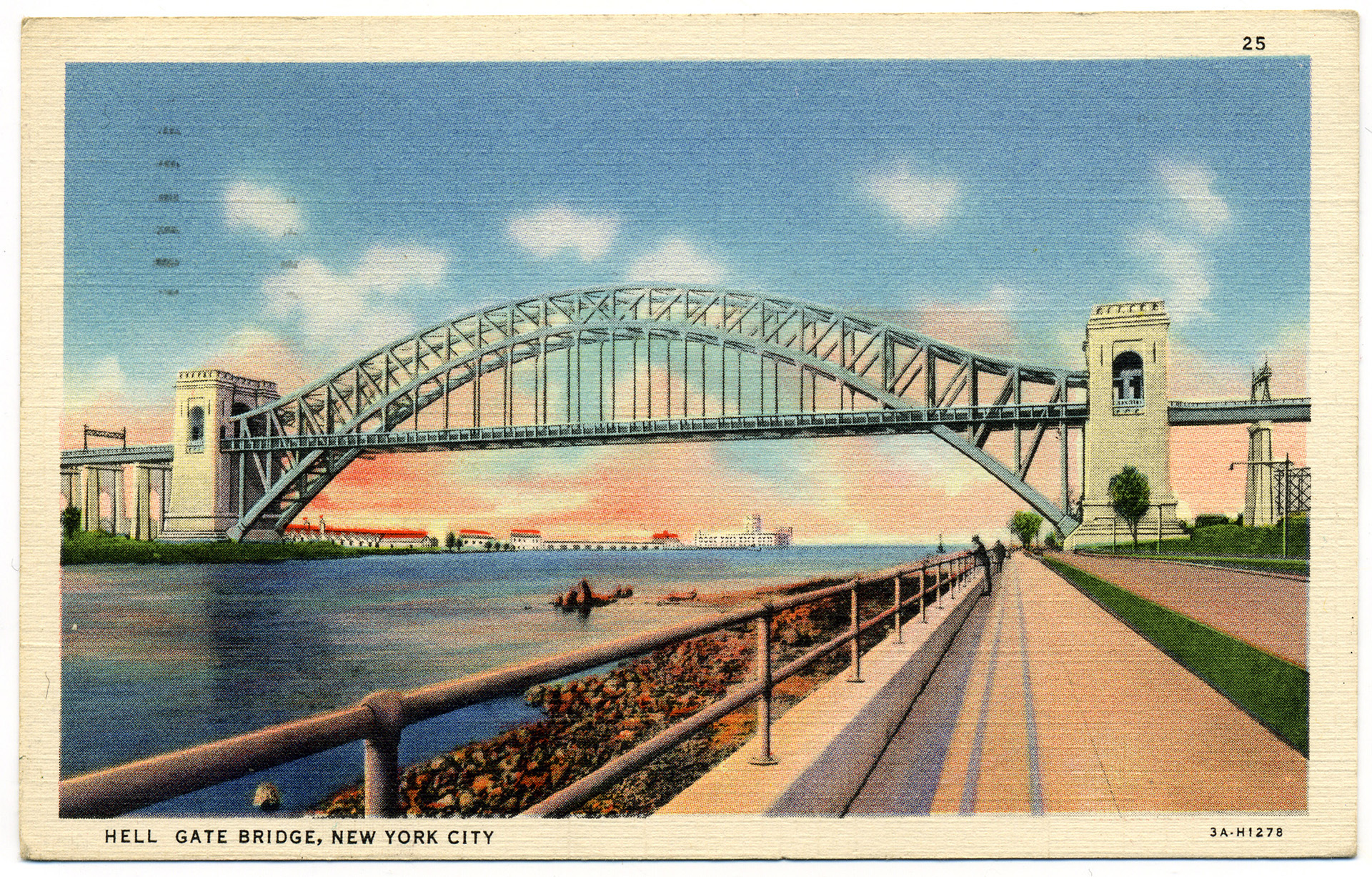Hell Gate Bridge
Then
Originally called the East River Arch Bridge, the Hell Gate Bridge was built to connect Pennsylvania Railroad routes from N.J. and N.Y. with the New York, New Haven and Hartford Railroad to points in New England.
The New York Connecting Railroad was incorporated in 1892 for the project, which included tunnels under the Hudson and bridges between Queens, Randall’s Island, and the Bronx. Engineer Gustav Lindenthal was hired as bridge architect and consulting engineer, and both Othmar Ammann (later the engineer for the George Washington Bridge) and David B. Steinman (engineer of the Henry Hudson Bridge) served as assistant chief engineers under him.
The 1,017-foot bridge was the world’s longest steel arch bridge when it opened in 1917, and held the record until the Bayonne Bridge (engineered by Ammann) was opened in 1931.

Hell Gate Bridge, 2009
Now
The Hell Gate has been surpassed in length over the years and is now the 17th longest bridge of its kind. While it originally had four tracks, it now only has three (two electrified passenger tracks carrying Amtrak and occasional NJTransit trains to the Meadowlands and one freight track carrying CSX and Norfolk Southern trains); one was removed due to lack of use in the 1970s.
A project to paint it “Hell Gate Red” was completed in 1996; it was the first time the bridge had been painted since 1916. The paint promptly faded to the pinkish color it is today. A rehabilitation project by Amtrak has been underway since 2008, with the bridge scheduled for repainting at its finish. It has yet to be repainted, as detailed in a March 2012 article in the New York Times.
More about the Hell Gate Bridge can be found in Othmar Ammann’s 1917 paper on the bridge in the Transactions of the American Society of Civil Engineers, on nycroads.com, and in Darl Rastorfer's book Six Bridges.
